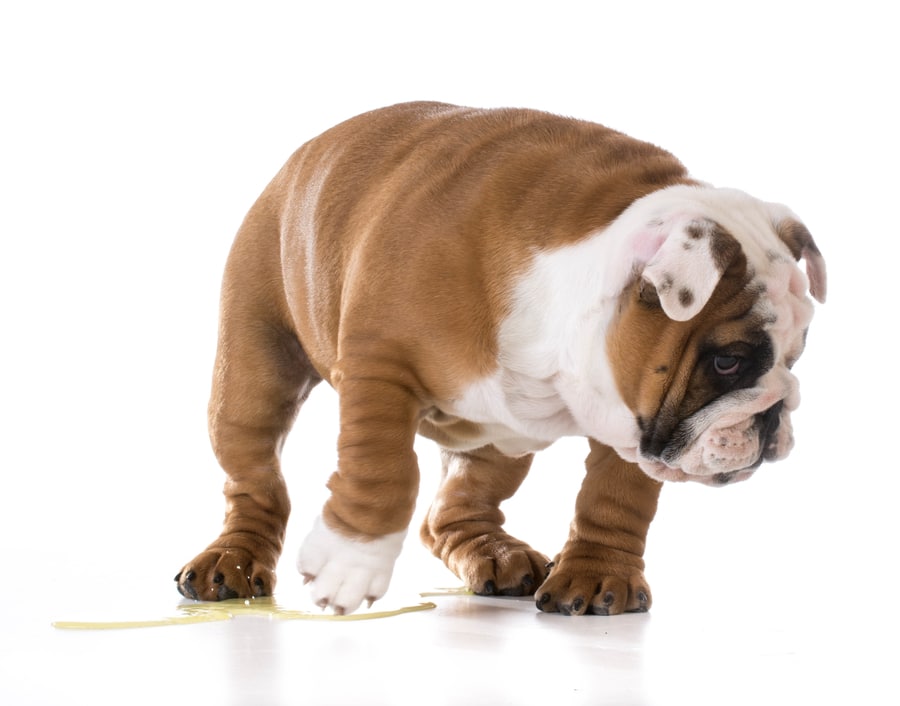How To Discipline a Bulldog? Training with Compassion

Training your bulldog with obedience exercises can seem daunting and laborious. Each dog has their own little personality and you may have to adjust each training session to their needs. Bulldogs have a reputation of being stubborn, so training may take a bit longer, but don’t give up! Bulldogs also aim to please their family. Once they’ve learned to listen to commands, they will be the most obedient dog on the block.
How to discipline a bulldog? Bulldogs should receive a calm, but firm verbal correction. Address what the incorrect behavior was and clarify correct behavior with the bulldog through personalized training. As the bulldogs actions improve, recognize the successes and reward appropriately.
Many people educate their bulldogs to be calm, sociable, and adaptable. Potty training, sitting down, or doing tricks are easy activities to practice.
First of all, it should be mentioned that every form of training has to be individualized for each bulldog. For example, French Bulldogs have a very short attention span, so training sessions will need to be short and sweet. American Bulldogs will have a longer attention span. However, there are techniques, tricks, and training approaches that you can use to train any bulldogs. These tips may also be helpful for bulldogs that find it difficult to follow commands. Read on and find some ideas and tips on how to train an independent bulldog with a well-designed training plan!
Socialization is Essential
The task of socializing a bulldog begins when he is a cub. To be precise, you should start training your bulldog when they are about one and a half months to four months old. At this time you have to put special emphasis on the education and the habits of your bulldog. Since bulldogs have some aggressive genes, never be aggressive or yell at your bulldog. If you want a calm, docile bulldog, teach them by your behavior. Be firm and assertive while keeping a calm composure. Most importantly, a puppy should feel safe and protected during this learning phase so your puppy will associate the training with positive experiences.
Some dog breeds will respond well to classic training methods based on dominance by the owner and strict control over the animal. On the contrary, the bulldog will begin to become aggressive if this approach is used with them. That being said, it is important to follow through with commands. If you give the bulldog an inch, they will take a mile. Be assertive yet kind, and you’ll have your dog trained in no time.
Your training should work toward a long-term goal and be conducted intelligently. Games, rewards, communication and patience are essential. If you are feeling discouraged, just keep at it. A few minutes a day will go a long way. Giving in to a stubborn bulldog is as bad as using force or punishment. Do not give up or move on to the next thing. Before each training session, think about what you want to teach your bulldog and why. Then you have to accept the challenge and stick it out.
Bulldogs are intelligent animals that live according to the models of their owners. If something does not work, change the teaching method, not the lesson itself. The good news is that training sessions will never be forgotten. A disciplined bulldog with a strong character retains a level of human intelligence.
How to Teach a Bulldog Basic Commands
After you teach the basic commands to your bulldog, teach them some fun tricks! Check out our article on how to teach your bulldog to skateboard and teach your bulldog to roll over.
Sitting
In order to teach your bulldog the “sitting” order, two methods are available to you. Choose the one that speaks to you the most:
- Method 1: Kneel before your bulldog and prepare a treat in your hand, as a reward. Place the treat right in front of your bulldog’s nose and say “sit” at the same time as you gently lift the treat, over his head. From now on, there is a good chance that he will sit looking up as soon as you pronounce the word “sit.” If he steps back, gently put your hand on his rear end and have him sit down. Reward him consistently with a treat, whether he needed help getting the canine obedience exercise done or not.
- Method 2: Sit in front of your bulldog, place one hand on his chest and the other immediately behind his back legs. Say “sit down” and gently squeeze her chest to make her sit down. As soon as he sits, reward him with a treat.
Lay Down
You also have two possibilities to teach your bulldog the “lying down” order. Choose the most consistent for you:
- Method 1: Kneel and place your left hand the bulldog’s shoulders. Then place your right hand just behind his front legs. Say “lying down” by gently pressing on his shoulders. Slide his front legs until your bulldog is lying down. Stroke his back for a few seconds to allow him to relax and encourage him to stay in this position. Praise him and let him enjoy a treat. Use some kind of keyword that rings the end of the exercise. Let your bulldog get up, congratulate him, and reward him again. Repeat the exercise several times, to bring your bulldog back to the reclining position. From now on, your bulldog will take this position as soon as you give him the order.
- Method 2: Drop your left hand on the shoulders of your bulldog with a treat in your right hand over her mouth. Say “lay down” and slowly put the treat on the floor, between their legs. Then slowly pull the treat forward. As soon as your bulldog is lying down, let him eat the treat.
Stay
This order of bulldog obedience is intended to keep your bulldog in his position, until you pronounce the key word to end the exercise. It is important that the orders you give your bulldog are well marked by a beginning and an end, both clearly visible to your bulldog. Do not perform this exercise with food in your hand. This would only encourage your bulldog to follow you for you to give it to him. Train your bulldog to succeed in this order by missing you and pronouncing the keyword as soon as you return. If you feel that your bulldog will give up the position, repeat the “stay” order.
Best Dog Training Tools
• Clicker training is a method based on the principle of positive reinforcement, which is based on scientific foundations. With the clicker, make your bulldog understand what you expect from him. The clicker is a bulldog training accessory that emits a particular sound as soon as you click on the button.
• At the same time, you can say a specific word. According to detractors of the clicker, the use of words would further strengthen the links between a bulldog and his master. According to the American Kennel Club, the clicker is an accessory used frequently with bulldog training.
• A leash is also an essential accessory to train your bulldog, according to the recommendations of the American Kennel Club. I personally recommend using a harness for bulldogs, to keep their breathing as easy as possible. Train your bulldog to enjoy wearing his collar and being on his leash.
History of Canine Obedience
Working dogs have learned to obey orders depending on the breed’s field of activity.For example, sheepdogs have learned to guide their flocks in a direction indicated by their master. These dogs enjoy playing with Pezzi balls that they like to advance.
Obedience training and test of obedience: what difference?
The biggest difference between these two disciplines is that a bulldog gets a lot more treats , as part of their training. For example, the goal might be that the bulldog will perform better when they receive rewards. Try to train your bulldog without a systematic reward. At the end of each session of obedience, reward your companion with a lot of praise and love.
The discipline described as bulldog obedience is characterized by very simple orders such as “sit”, as well as by high level competitions, such as those practiced by the American Kennel Club, the United Kennel Club and the Canadian Kennel Club. In these canine obedience competitions, the difficulty of the orders, the precision of the execution and the general performance are all elements evaluated by the judges.
In order for the bulldog to be described as “obedient” (as opposed to “educated”), he must effectively respond to all requests from his master. Masters take great pleasure in practicing this discipline alongside their bulldog. In the same way, the bulldogs like to carry out these exercises in the company of their master.
Conclusion
It is essential to socialize and train your bulldog while they are still a puppy. The older they get, the more stubborn they become. And here’s my personal take on the situation. Bulldogs can get a bad wrap. They have a fighting past and become aggressive if they are agitated. Your bulldog must know their commands, and that you mean business, and you have to be confident to keep your bulldog in control too. Be firm, don’t give in to their stubbornness, and most importantly be gentle and patient. Your bulldog will learn their commands and how to behave around other dogs. Break the bulldog stigma and socialize and train your bulldog to be docile and calm around others.
Related Question
Can Bulldogs be Aggressive? Bulldogs are instinctively aggressive. While this has been bred out over time, the gene is still there! They like to be the alpha dog. Socialize your dog from an early age to be around other dogs and play well others.

































